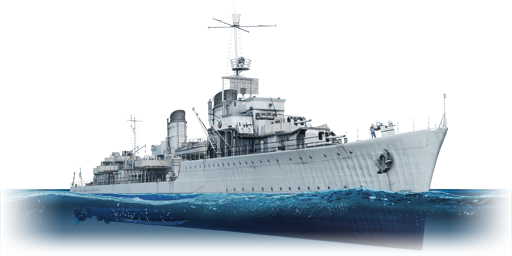The Z15 Erich Steinbrinck was a German Type 1934A destroyer. Z15 was named after the WWI German naval officer Erich Steinbrinck. She was laid down on 30th May 1935 and commissioned on 8th June 1938. Her main armament as built was five 12.8 cm SK C/34 cannons in single mounts, with secondary armament being two twin 3.7 cm C/30 cannons as well as six 2 cm C/30 autocannons. Torpedo armament was supplied by two quadruple 533 mm launchers located amidships. After the breakout of WWII, she laid minefields in the North Sea. She underwent refit and repairs during the Norwegian campaign, and was thus spared from being sunk by British unlike most Kriegsmarine destroyers. From early 1941, Z15 conducted escort duties in the Bay of Biscay and along the French coast before being transferred to Norway in 1942. In mid-1943, she took part in the German attack on the Spitzbergen Islands. After returning to Germany for refit, she was damaged by Allied bombers while in dock, becoming unservicable for the remainder of war. She was given to the Soviets as war reparations where she served as a training ship and later a floating barracks before being sold for scrap in 1958.
The Z15 was introduced in Update 1.93 "Shark Attack". Like other German destroyers, the Z15 is fast, responsive, and manoeuvrable. Armed with 12.8 cm guns with a fire rate of 18 rounds/min using the ten ready-use rounds and later decreasing to a still impressive 16 rounds/min, she is a force to be reckoned with. The anti-air protection is quite strong with six 2 cm autocannons for short-range and seven twin 3.7 cm autocannons for mid to long-range protection. The Z15 unfortunately inherited another design feature of her German sisters, the unprotected magazines on waterline, making the vessel susceptible to fatal magazine explosions.














